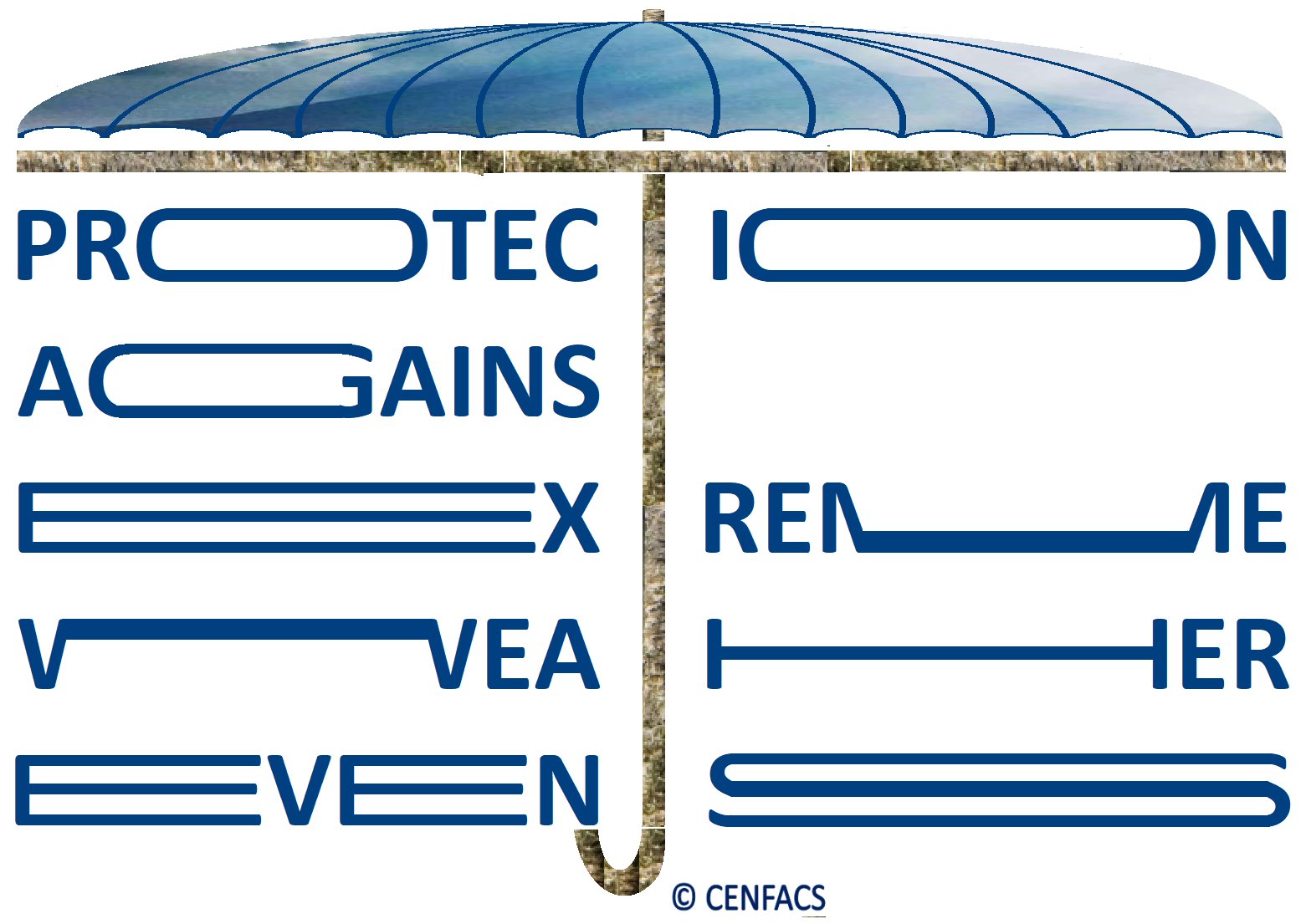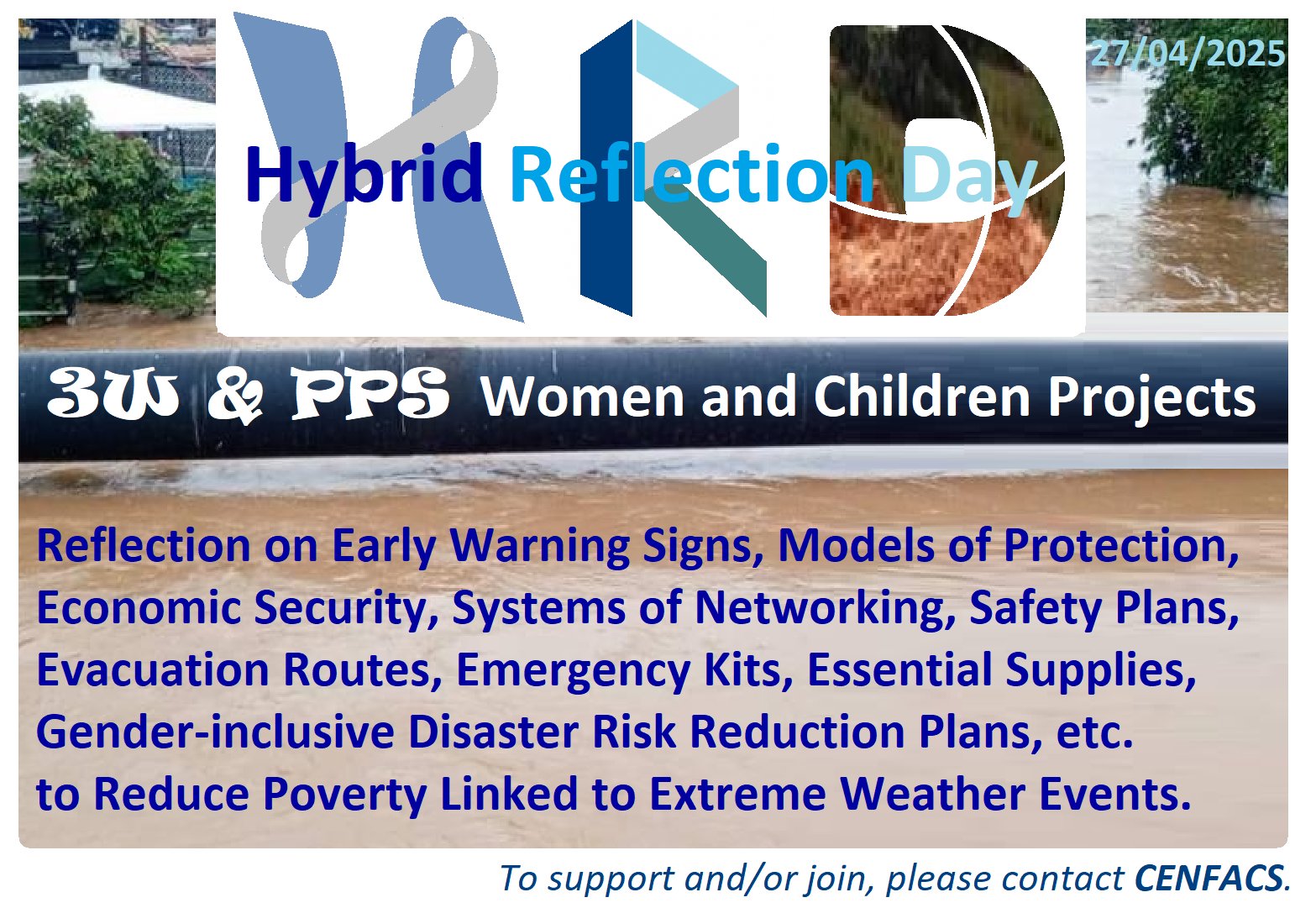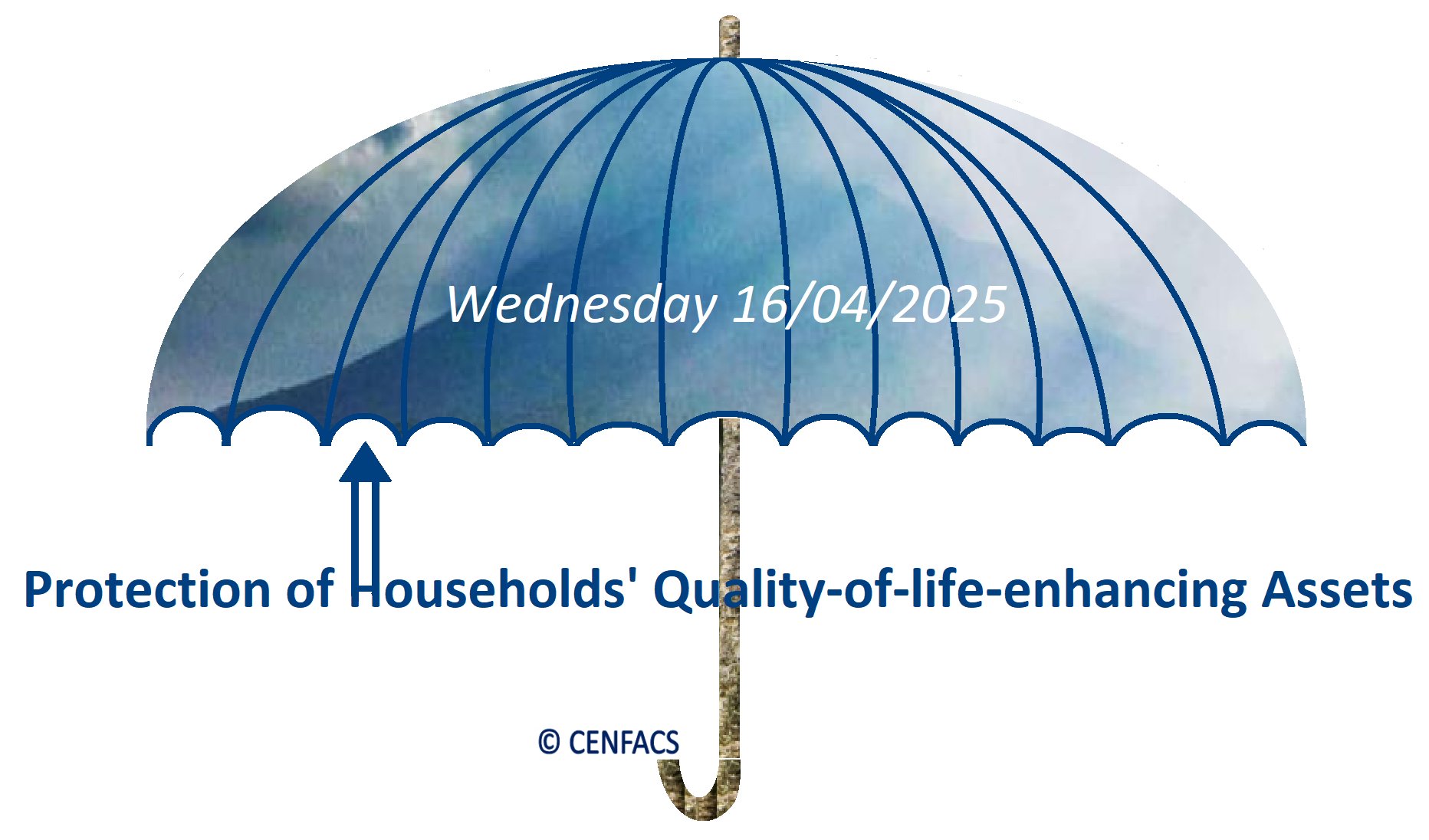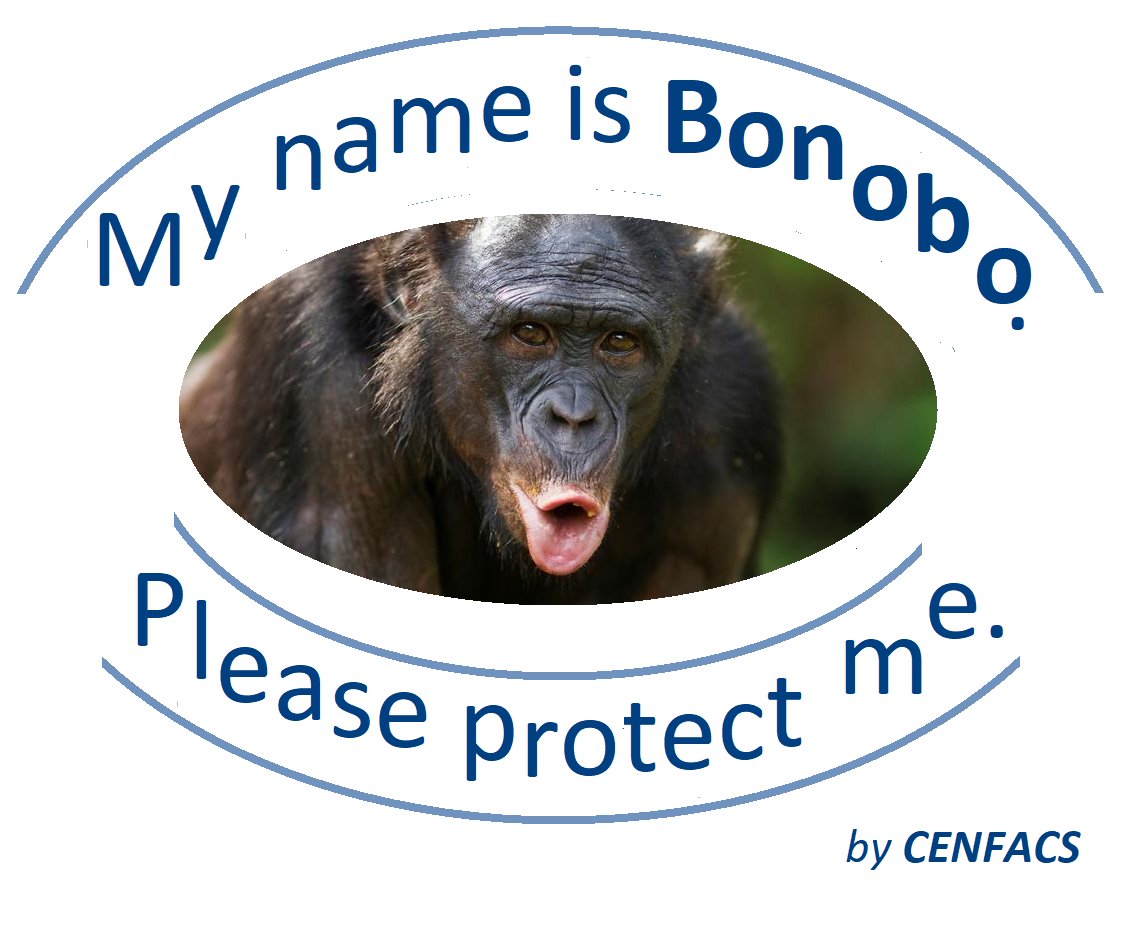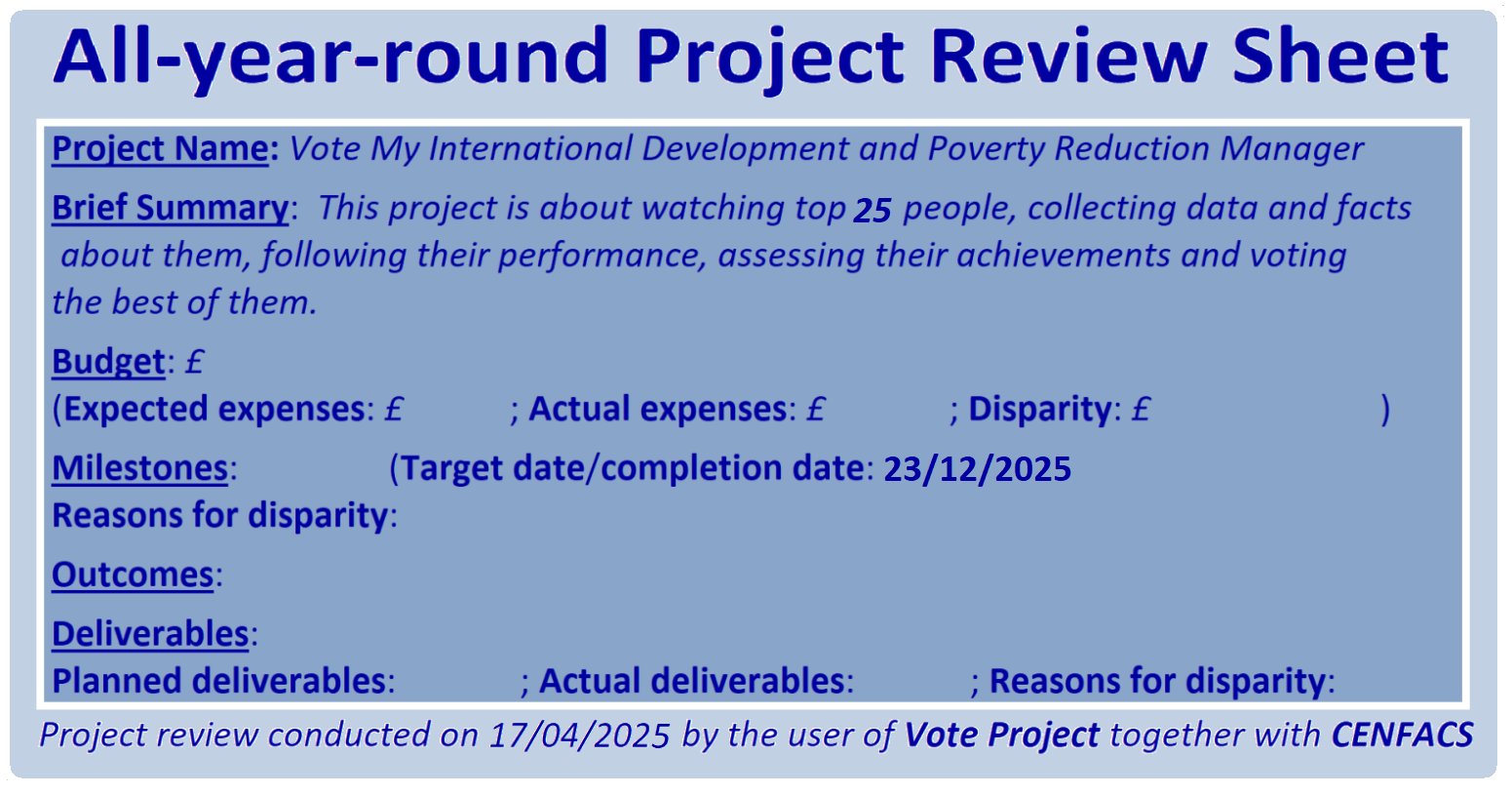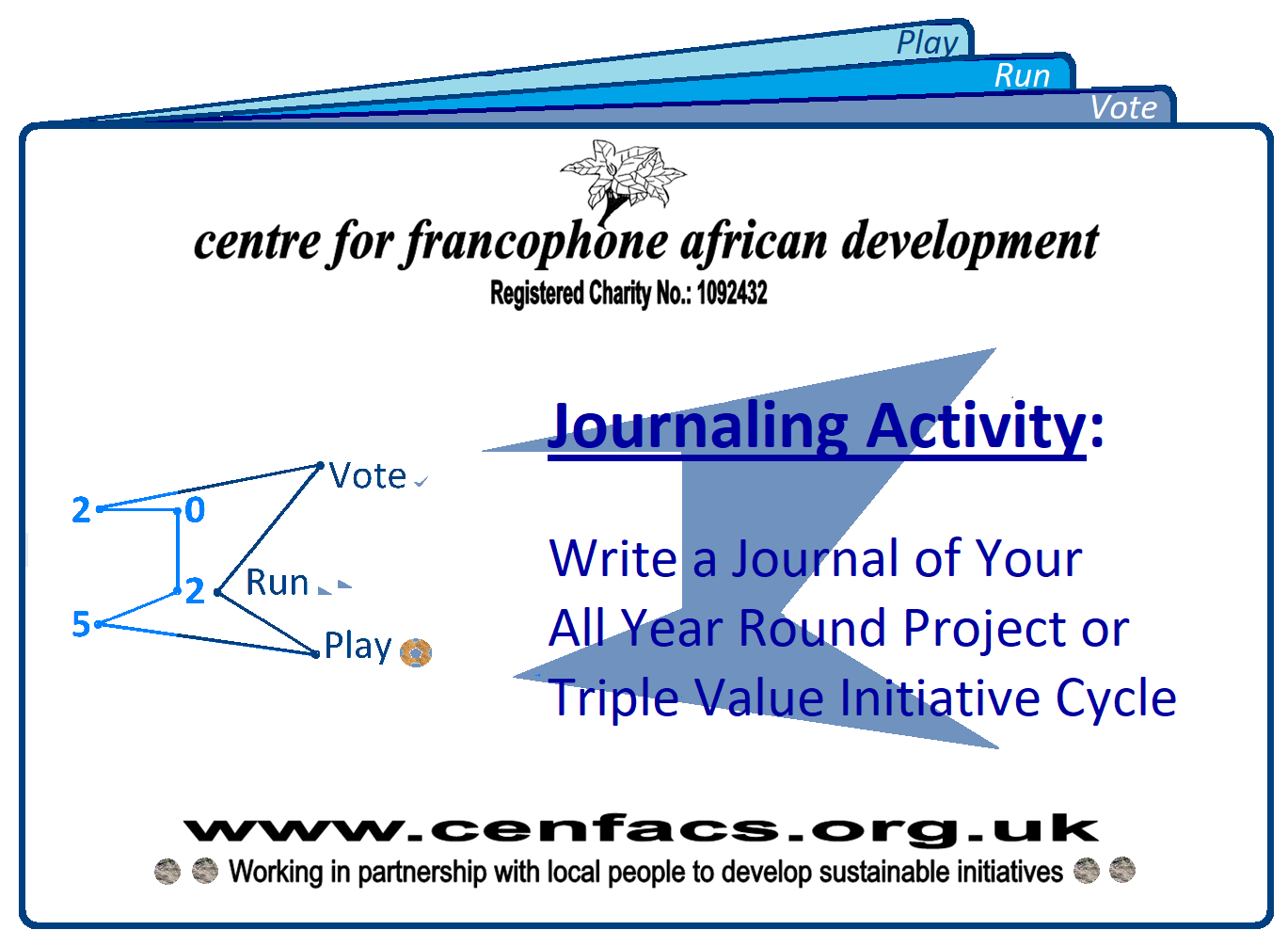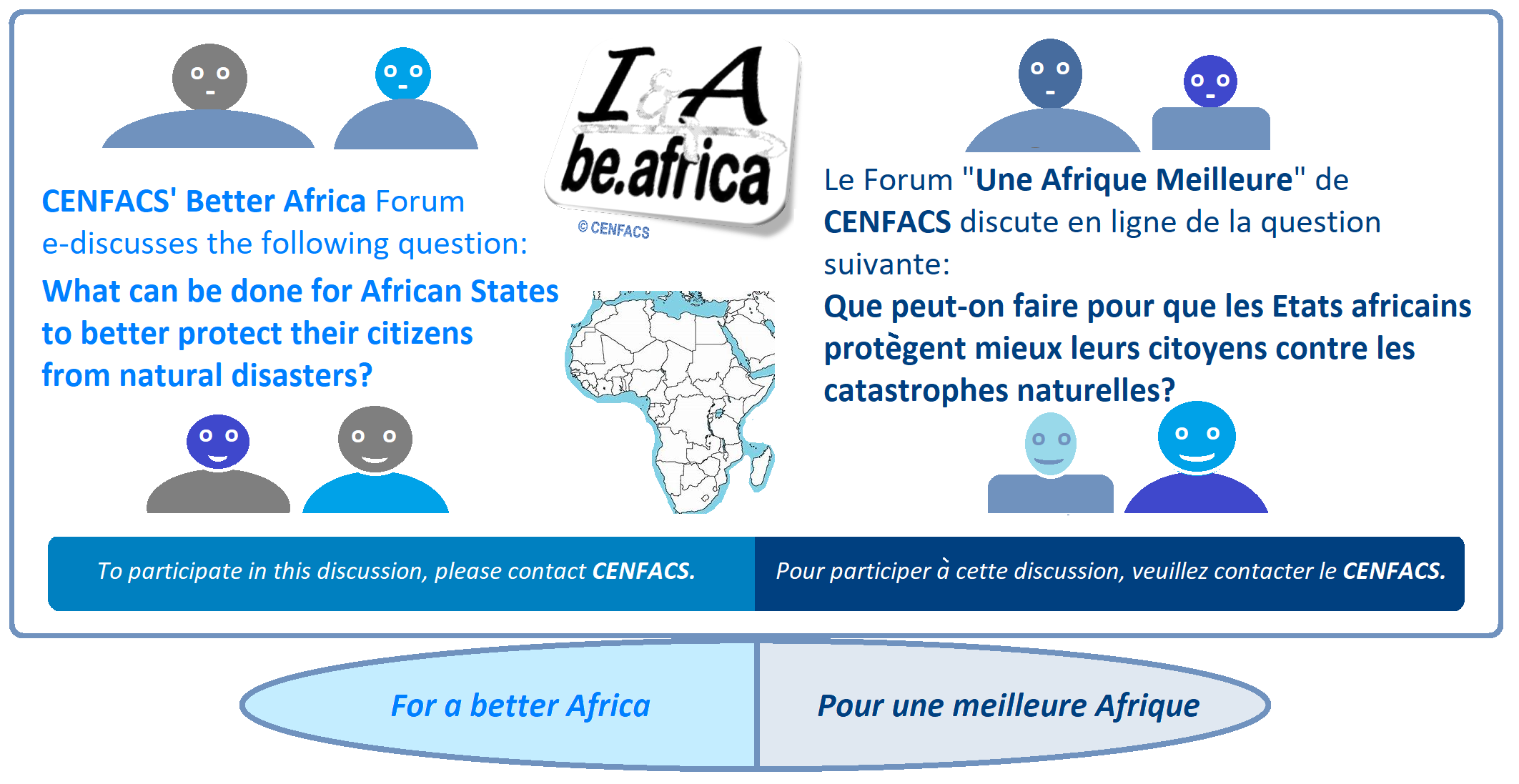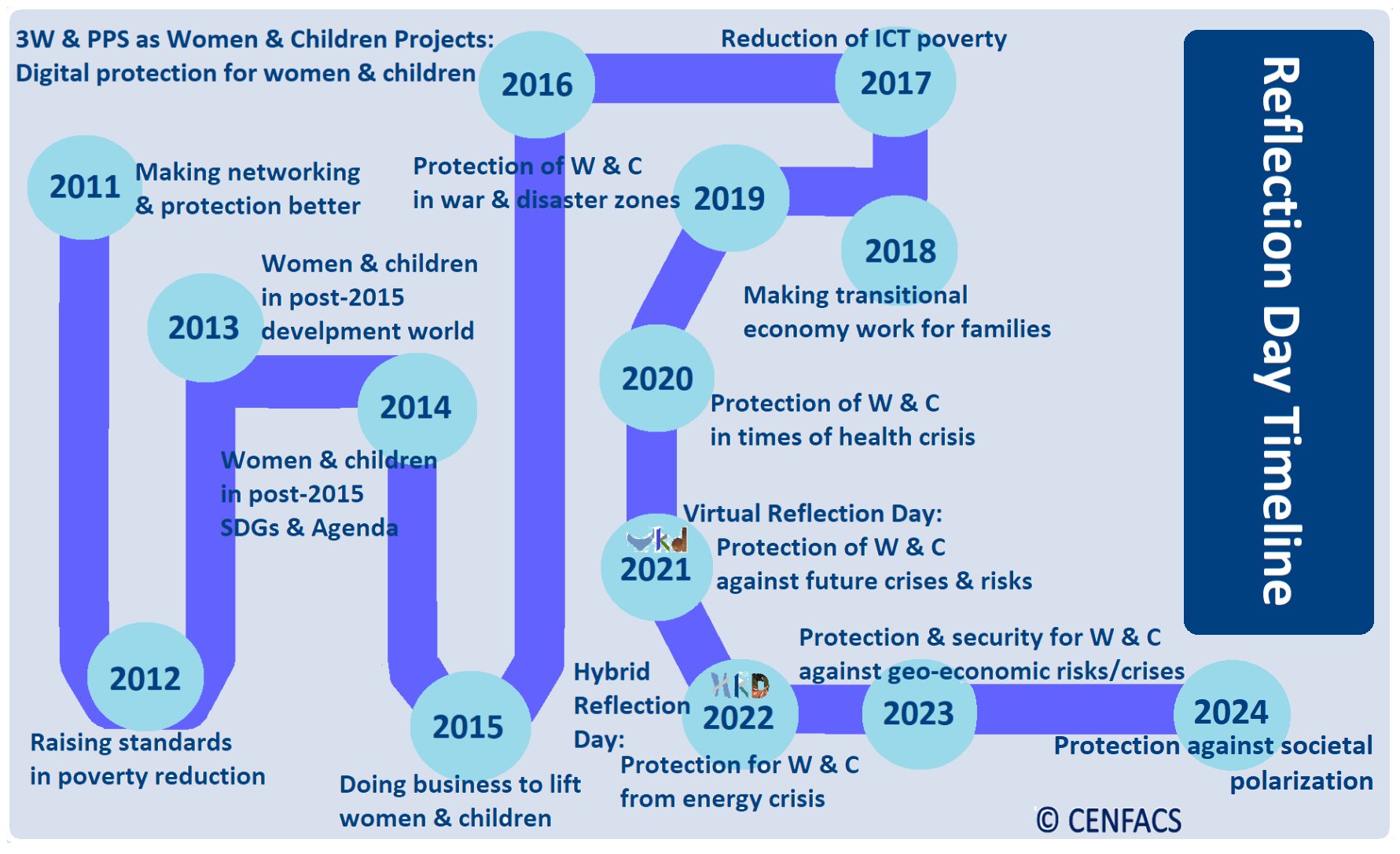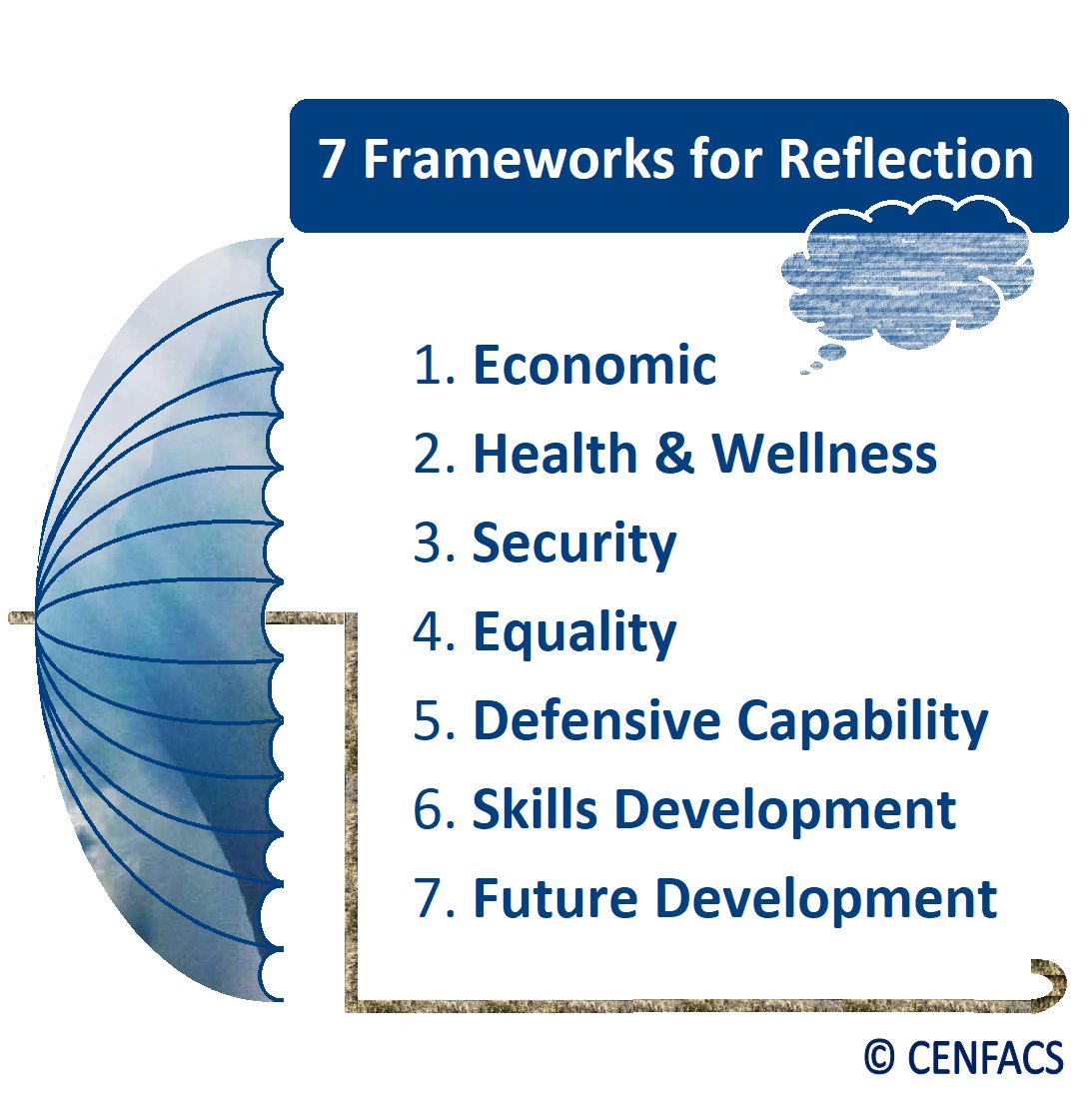Welcome to CENFACS’ Online Diary!
16 April 2025
Post No. 400
The Week’s Contents
• Coming Next Week’s Sunday 27/04/2025: The 15th Edition of CENFACS Reflection Day with a Focus on Protection and Security of Women and Children against Extreme Weather Events
• Protection Key Note 3 from Wednesday 16/04/2025: Protection of Households’ Quality-of-life-enhancing Assets
• Activity 4 of the Economic Inclusion Programme for Households’ Opportunity: A Survey on Adaptive Safety Net Schemes
… And much more!
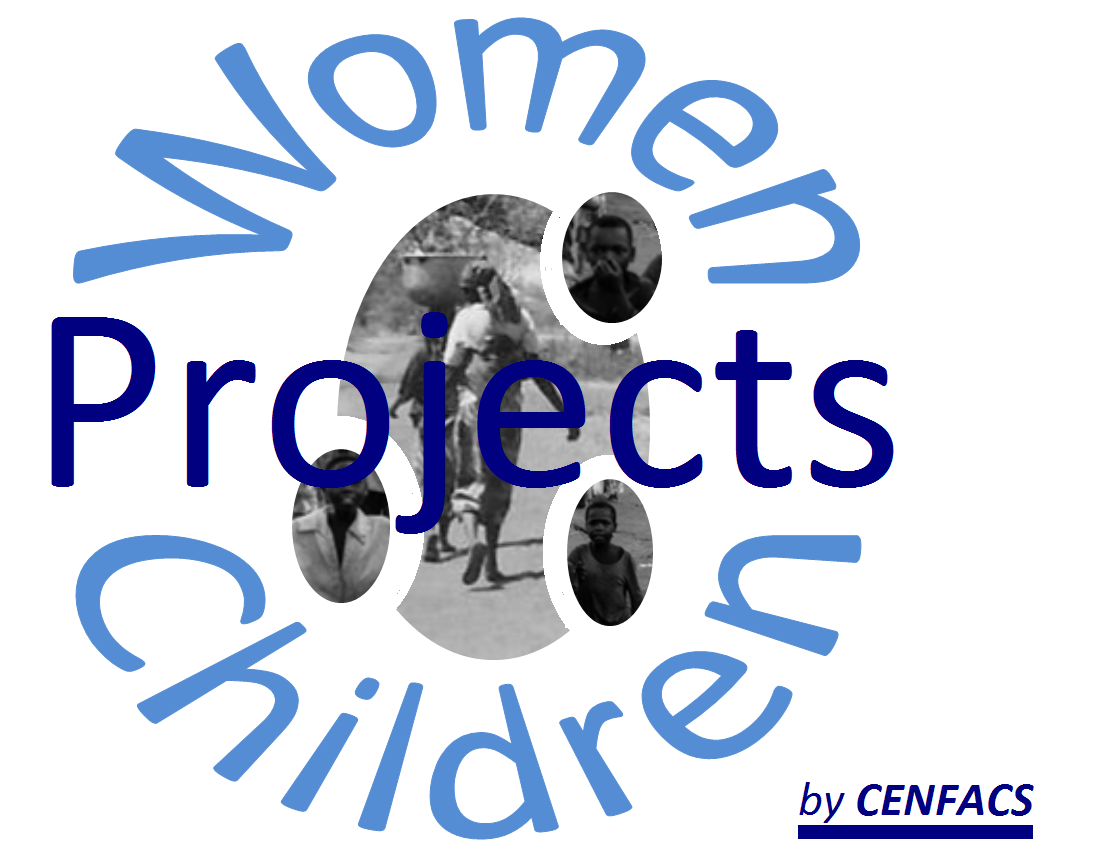
Key Messages
• Coming Next Week’s Sunday 27/04/2025: The 15th Edition of CENFACS Reflection Day with a Focus on Protection and Security of Women and Children against Extreme Weather Events
On our Reflection Day, we will reflect on ways of tackling extreme weather events.
Regarding these events, the World Economic Forum (1) notes that
“Over the last year, we have witnessed a multitude of extreme weather events amplified by climate change… The risk associated with extreme weather events is a key concern for the year ahead, with 14% of respondents selecting it”.
Extreme weather events and their associated risk are also a concern for CENFACS Community members, who would like to reflect on them during the 15th Edition of CENFACS Reflection Day.
To introduce the 15th Edition of CENFACS Reflection Day, let us first define extreme weather events, then summarily highlight their impacts and indicate the contents of the Reflection Day.
• • What Are Extreme Weather Events?
Extreme Weather Events can be approached in various ways. In the context of the 15th Edition of CENFACS Reflection Day, we would like to refer to what Professor David Karoly (2) of the University of Melbourne argues that them. Professor Karoly speaks about an extreme (weather or climate) event and refers to Oxford Dictionary definitions about extreme and event. The definitions he gives are:
# extreme is about reaching a high or the highest degree, very great
# event is a thing that happens or takes place, especially one of importance.
From his perspective, extreme event is the occurrence of a value (or below) a threshold value near the upper (or lower) ends of the range of its observed values in a specific region.
This nearing of a threshold value the upper (or lower) ends of observed values can have a serious impact on human and material lives. In our Reflection Day, we shall think of these impacts on women and children.
• • Impacts of Extreme Weather Events (EWEs)
There are evidences and examples explaining how EWEs are impacting women and children, particularly but not limited to Africa.
For instance, the website ‘unfccc.int’ (3) explains that
“In some African countries, many men are migrating from rural to urban areas to find employment, a trend driven by extreme weather events, leaving women behind in charge of land and the household but not necessarily with the respective legal rights or social authority to do so”.
The same ‘unfccc.int’ mentions other impacts relating to EWEs (like storms, floods and heatwaves) such as increase in gender-based violence.
Similarly, Save the Children (4) argues that
“About one in 8 children globally have been significantly impacted by the 10 biggest extreme weather events so far this year [2024] having to flee their homes, become reliant on aid or missing out on school”.
Save the Children gives the following examples:
# Flooding across West and Central Africa that forced 10 million children out of school
# Drought in Southern Africa which the United Nations says it is the worst in over 100 years, putting 12.2 million children in need of humanitarian assistance
# Children were impacted by other instances of floods, cyclones and monsoons across Bangladesh, the Horn of Africa, the Democratic Republic of Congo, South Sudan and Brazil.
The above-mentioned data, facts and quotes indicate that EWEs are negatively impacting women and children. It is this impact that we would like to reflect upon in terms of protection of women and children on our Reflection Day.
• • What Our Reflection Will Be about
Our Reflection Day will try to look at ways of protecting and give sense of security to women and children from EWEs, which are the second risk in change in short-term (2 years) global risks perception in terms of the state of level of concern, according to the World Economic Forum (op. cit.). In particular, we shall reflect on ways of Protecting and Providing a Sense of Security to Women and Children against Floods, Drought, Heatwaves, etc.
More on the Reflection Day can be found under the Main Development section of this post.
• Protection Key Note 3 from Wednesday 16/04/2025: Protection of Households’ Quality-of-life-enhancing Assets
Quality-of-life-enhancing Assets are another type of assets that poor households may possess. These assets need protection. Before looking at ways of protecting these assets, let us explain them, give some examples of them and our guidance to these households on them.
• • What Are Households’ Quality-of-life-enhancing Assets?
Households’ Quality-of-life-enhancing Assets (HQoleAs) are possessions or resources that directly improve the well-being and comfort of households, including possessions or resources that do not directly generate income. HQoleAs help households improve their living standards/conditions and provide amenities. In doing so, they enhance the overall quality of life for household members.
Quality of life can be subjectively understood in the terms of the World Heath Organisation’s definition, definition quoted by ‘berkeleywellbeing.com’ (5), as
“An individual’s perception of their position in life in the context of the culture and value systems in which they live and in relation to their goals, expectations, standards and concerns”.
The standard of living can be objectively defined as an indicator that provides some of the basic factors needed to afford one the choices in life that define quality of life, argued by the same ‘berkeleywellbeing.com’.
Examples of these assets are giving below.
• • Examples of HQoleAs
We can mention the following:
# housing as a basic need (the quality of house that households may have)
# infrastructure (e.g., electricity, clean water, sanitation, internet, etc.)
# amenities or home appliances (e.g., refrigerators, washing machines, TV, and stoves)
# vehicles as necessity for transportation and work
# green spaces (for instance, access to parks, gardens and other spaces can improve mental and physical health of household members)
# social interactions (can enhance household members’ overall quality of life)
# education, skills development and healthcare (can improve the wellbeing of household members)
etc.
These assets can contribute to households’ comfort, convenience, and overall satisfaction with their living conditions and daily experiences. However, they need protection.
• • Protection of HQoleAs
Protecting HQoleAs is about safeguarding possessions, resources and conditions that contribute to households’ quality of life. It is the protection of physical assets like property and infrastructure, as well as intangible assets such as social connections and access to opportunities. To protect them, one needs to use some strategies.
Protection strategies for HQoleAs will include regular maintenance of HQoleAs, safety measures, guaranteed access to services like education and healthcare, etc. Let us explain further these strategies.
• • • Protection strategies for HQoleAs
Protection strategies will cover both physical and intangible assets.
• • • • Protection of households’ quality-of-life-enhancing physical assets
It involves regularly maintaining property and infrastructure, implementing safety systems and insurance, and investing in secure storage for valuable possessions.
• • • • Protection of households’ quality-of-life-enhancing intangible assets
It includes ensuring access to affordable and quality healthcare services for all, investing in education and training programme, providing affordable housing options and fostering a sense of community, protecting natural environment, encouraging healthy relationships or social connections, building supportive networks, ensuring safe and secure environment, etc.
Those households that will enjoy the above-mentioned elements of protection strategies will feel safe and secure. Some of them may know or learn by themselves how to protect their quality-of-life-enhancing physical and intangible assets. Others may not know or simply have some gap in information and knowledge on the way of protecting their quality-of-life-enhancing physical and intangible assets. For the latter ones, CENFACS can work with them or guide them to the kind of protection they will be looking for their quality-of-life-enhancing physical and intangible assets.
• • CENFACS’ Guidance on Protection of Households’ Quality-of-life-enhancing Assets
There is a number of ways that CENFACS can work with the members of its community to enhance Protection of Households’ Quality-of-life-enhancing Assets. We can work together to access or improve the way they are trying to access or approach protection relating to Quality-of-life-enhancing Assets. Amongst these ways of working with the members of our community to enhance their asset protection include the ones given below.
Under this provision of Guidance on Protection, we can support our members in the following ways:
σ Inform them about the various options available to them regarding Protection of Households’ Quality-of-life-enhancing Assets
σ Signpost them for support to organisations dealing with Protection of Households’ Quality-of-life-enhancing Assets
σ Refer them to voluntary organisations dealing with Protection of Households’ Quality-of-life-enhancing Assets.
The above are just some of ways CENFACS could support the community regarding Protection of Households’ Quality-of-life-enhancing Assets. These support services or products make up our asset guidance service relating to Protection of Households’ Quality-of-life-enhancing Assets.
Those who need help and support about Protection of Households’ Quality-of-life-enhancing Assets and/or for any of the matters listed above falling within our capacity, they can contact CENFACS.
• Activity 4 of the Economic Inclusion Programme for Households’ Opportunity: A Survey on Adaptive Safety Net Schemes (From 30/04/2025)
Activity 4 is about a list of questions aimed for extracting specific data from the members of the CENFACS Community on Opportunity for Adaptive Safety Net Schemes. To introduce this Activity 4, which will be held from 30/04/2025, let us explain Adaptive Safety Net Schemes, provide their contents and the selected question from this survey.
• • Explaining Adaptive Safety Net Schemes (ASNSs)
It emerges from the protection literature that Adaptive Safety Net Schemes – also known as Adaptive Social Protection – are social protection programmes designed to build resilience in vulnerable populations by anticipating and responding to shocks like climate change and economic downturns. Perhaps, the best way to dive into their explanation is to unveil their contents.
• • Examples of ASNSs
The survey of protection literature on ASNSs provides the following components:
# Financial transfers (i.e., cash or in-kind transfers)
# Productive inclusion (e.g., access to income-earning opportunities)
# Infrastructure development (for instance, access to essential services like water and sanitation)
# Disaster risk reduction (such as building resilient infrastructure)
# Climate change adaptation (like promotion of drought-resistant crops and improving water management practices)
Etc.
If we take, for instance, cash transfer programmes, they can help poor households overcome liquidity constraints and invest in productive activities. It is not a surprise if ‘capacity4dev.europa.eu’ (6) argues that
“Adaptive social protection instruments are important for people, irrespective of where they are in the life cycle”.
Similarly, the World Bank (7) recognises that safety nets build resilience and protect vulnerable households from impacts of economic shocks, natural disasters, and other crises.
There are different schemes about safety nets depending on needs, countries and those who put them in place.
For instance, social safety nets (or social assistance) are non-contributory transfer programmes generally targeted to the poor or those vulnerable to shocks. They include cash transfers, food or other in-kind distribution, fee waivers to enable essential consumption, etc.
If one considers the benefits cash transfers, they will know that cash transfers can allow households to smooth consumption, access credit, and invest. However, there could a problem in the design of cash transfer programmes.
The survey is a bout this design problem. As part of this survey, we are asking the question below.
• • Question Relating to the Survey
One of the questions making this survey is:
Is the design of cash transfer programmes you know tailored to your local contexts that consider factors like market functionality, seasonality, and gender considerations, or simply done to enable recipients to have some cash for basic consumption?
Those who may be interested in the survey can directly answer the question to CENFACS by 30/04/2025.
Those members of the CENFACS Community who would like to get involved in the survey can contact CENFACS.
For any other queries and or enquiries about this survey on Economic Inclusion Programme for Households’ Opportunity, please communicate with CENFACS.
Extra Messages
• Protection of Endangered Animals in Africa: The Case of Bonobos
• All-year Round Projects Cycle (Triple Value Initiatives Cycle) – Step/Workshop 9: Reviewing Your Play, Run and Vote Projects
• Triple Value Initiatives (TVIs)/All-year Round Projects (AYRPs) Journaling Activity: Write a Journal of Your TVI/AYRP Cycle
• Protection of Endangered Animals in Africa: The Case of Bonobos
We continue to advocate for the protection of animals (fauna) in Africa and elsewhere in developing world whereby animals get killed, illegally or illicitly traded and extinct to such extent that some species are at the brink of disappearing. One of these animals that need protection is bonobo.
• • What Are Bonobos?
Briefly speaking, bonobos are critically endangered great ape only found in the Democratic Republic of Congo. Like chimpanzees, bonobos share more than 98 percent of DNA with humans. They live only in one a place and it is remote place – deep in the rainforest of the Democratic Republic of Congo, according to African Wildlife Foundation (8).
• • Conservation Status of Bonobos
According to African Wildlife Foundation, bonobos are increasingly at risk from human beings, who have killed them off to the point of endangerment. There are an estimated 15,000-20,000 wild bonobos remaining. They are critically endangered.
Their numbers are decreasing due to three main reasons: poaching, barriers to enforce wildlife laws and conservation management, and disease. These reasons and other ones are put forward by most of the conservationists and environmental organisations – like Treehugger (9) – working on the issue.
• • Ways of Helping to Save Bonobos
To save the bonobo population, the following protection actions can be taken:
#Reduce and end the illegal trade of bushmeat
# Enforce wildlife laws and conservation management in the Democratic Republic of Congo, especially around the bonobo habitat
# Tackle bonobo habitat destruction and degradation
# Improve agriculture conservation and urban development in the vicinity of the bonobo habitat
# Carry out afforestation near bonobo sites to maintain the bonobo habitats
# Treat infectious diseases linked to human borne and natural pathogens found in bonobos
# Support CENFACS‘ action on the Protection of Endangered Animals in Africa, particularly the Big Beasts advocacy
# Donate to charities and other voluntary organisations working on the bonobo issue or similar campaigns
# Make a gift to protect vulnerable species like bonobos.
Those members of our community who are interested in advocating with us for the protection of Bonobos, they are welcome to get involved in this advocacy drive. Other individuals can also join in.
Those African organisations working on bonobo matter and have the same concern like ours, they can share with us their experience and work on this matter of protecting the Bonobos.
To get involved or share your work about the protection of Bonobos, please contact CENFACS.
• All-year Round Projects Cycle (Triple Value Initiatives Cycle) – Step/Workshop 9: Reviewing Your Play, Run and Vote Projects
You can start reviewing Your Play, Run and Vote Projects, while the monitoring and observability of the same projects are still going on. But, what are project reviews?
• • Basic Understanding of Project Reviews
Project reviews can be explained in many ways depending on any approaches taken. Referring to the explanation of ‘fox-plan.com’ (10),
“A project review is an evaluation of the current progress of a project at a specific point of the project (milestone)… A project review will provide you with a thorough knowledge of the current status of your project and if it is on track to meet your success criteria”.
There can be many or staggered reviews in a project depending on a project size, scope, scale, progress, complexity and resource availability. These different reviews can include initial review, completion review, special review and follow-up review. Also, to better review a project it is preferable to design a review process with guidelines, evidence and tools.
• • Example of Reviewing Your All-year Round Projects
Let us consider Voting Your 2025 International Development and Poverty Reduction Manager.
In order to review your Vote Project, you will proceed with the following three review tasks:
a) Examine and audit your planned tasks, activities, procedures, events and other work about the project
b) Identify if the amount of work you put in your project responded to your Vote Project requirements
c) Work out additional resources to help you complete the project.
The above is a simple version of project reviews. For those who would like to dive deeper into Reviewing their Play or Run or Vote project, they should not hesitate to contact CENFACS.
• Triple Value Initiatives (TVIs)/All-year Round Projects (AYRPs) Journaling Activity: Write a Journal of Your TVI/AYRP Cycle
You can write and reflect on what you are doing as TVI/AYRP user or beneficiary. Journaling a TVI/AYRP (that is Play, Run and Vote) can have benefits. To get those benefits, one needs to have a goal and plan activities/achievements.
• • Benefits of Journaling Your TVI/AYRP
The journal will help you to capture the moments of your TVI/AYRP via expressive writing and story. It can have other benefits such as the following ones:
σ setting up goals
σ tracking or measuring your progress on TVI/AYRP
σ recording results and celebrating achievements
σ gaining both general and specific perspectives from your TVI/AYRP.
You can even show your style and express your feeling or character through your writing. Another good thing of journaling your TVI/AYRP is that it makes things easy when it comes to report to CENFACS and others before the deadline of 23 December 2025.
• • Journaling Goal of TVI/AYRP
The goal is basically to explore and enrich one’s TVI/AYRP activity through creative writing. This goal does not stop users of TVI/AYRP to have their own journaling goal. Besides their journaling goal, they need to add what their journal can help achieve.
• • What One’s TVI/AYRP Journal Can Achieve
It can achieve many things including the following:
∝ Solve problems encountered in the cycle of your TVI/AYRP
∝ Enhance one’s health and wellness via TVI/AYRP
∝ Improve TVI/AYRP impact and outcomes.
For those who are undertaking any of the TVIs/AYRPs and would like to write a journal about their activity, they can do it. There are many online and print resources available on the matter. Please select resources that are concise and have some links with your TVIs/AYRPs.
For those who would like to approach CENFACS for help and support to write a Journal of TVI/AYRP or to select appropriate resources, they are welcome to do so.
Message in English-French (Message en Anglais-Français)
• CENFACS’ be.Africa Forum E-discusses the Following Question:
What Can Be Done for African States to Better Protect Their Citizens from Natural Disasters?
We have seen and witnessed life-threatening and -destroying natural disasters (like cyclones, torrential rains, drought, volcanoes, earthquakes, etc.) which have affected both human and natural lives in Africa. In some cases, African States have been up to the task of dealing with these natural shocks and risks. But, there is still a good number of cases where African States have been overwhelmed by the impacts of these disasters or simply rely on international rescue mission to deal with these disasters. Yet, these African States have the protection responsibility vis-à-vis their citizens.
As part of April Month of Protection and the Season of Rebuilding and Renewing Lives within CENFACS, we are e-discussing this:
What Can Be Done for African States to Better Protect Their Citizens from Natural Disasters?
The e-discussion will look at as well the channels or means that the natural disaster victims and their representatives can use to gain both re-protection and compensation from their States.
The above-mentioned question is part of this week’s debate within CENFACS’ be.Africa Forum.
Those who may be interested in these discussions can join our poverty reduction pundits and/or contribute by contacting CENFACS be.Africa Forum, which is a forum for discussion on poverty reduction and sustainable development issues in Africa and which acts on behalf of its members by making proposals or ideas for actions for a better Africa.
To contact CENFACS about this discussion, please use our usual contact information on this website.
• Le Forum ‘Une Afrique Meilleure’ de CENFACS discute en ligne de la question suivante:
Que peut-on faire pour que les États africains protègent mieux leurs citoyens contre les catastrophes naturelles ?
Nous avons vu et été témoins de catastrophes naturelles potentiellement mortelles et destructrices (comme les cyclones, les pluies torrentielles, la sécheresse, les volcans, les tremblements de terre, etc.) qui ont affecté à la fois des vies humaines et naturelles en Afrique. Dans certains cas, les États africains ont été à la hauteur de la tâche de faire face à ces chocs et risques naturels. Mais, il y a encore un bon nombre de cas où les États africains ont été submergés par les impacts de ces catastrophes ou s’appuient simplement sur des missions de sauvetage internationales pour faire face à ces catastrophes. Pourtant, ces États africains ont une responsabilité de protection vis-à-vis de leurs citoyens.
Dans le cadre du Mois de la Protection d’avril et de la Saison de Reconstruction et de Renouvellement des Vies au sein du CENFACS, nous discutons en ligne de ceci :
Que peut-on faire pour que les États africains protègent mieux leurs citoyens contre les catastrophes naturelles ?
La discussion en ligne portera également sur les canaux ou les moyens que les victimes de catastrophes naturelles et leurs représentant(e)s peuvent utiliser pour obtenir à la fois une reprotection et une indemnisation de la part de leurs États.
La questions susmentionnée fait partie du débat de cette semaine au sein du Forum ‘Une Afrique Meilleure’ de CENFACS.
Ceux ou celles qui pourraient être intéressé(e)s par cette discussion peuvent se joindre à nos experts en réduction de la pauvreté et/ou contribuer en contactant le ‘me.Afrique’ du CENFACS (ou le Forum ‘Une Afrique Meilleure’ de CENFACS), qui est un forum de discussion sur les questions de réduction de la pauvreté et de développement durable en Afrique et qui agit au nom de ses membres en faisant des propositions ou des idées d’actions pour une Afrique meilleure.
Pour contacter le CENFACS au sujet de cette discussion, veuillez utiliser nos coordonnées habituelles sur ce site Web.
Main Development
• Coming Next Week’s Sunday 27/04/2025: The 15th Edition of CENFACS Reflection Day with a Focus on Protection and Security of Women and Children against Extreme Weather Events
To help prepare for the 15th Edition of CENFACS Reflection Day, we have assembled protection materials and resources that have been grouped into the following two headlines:
∝ What is CENFACS’ Reflection Day?
∝ The 15th Edition of CENFACS’ Reflection Day.
Let us briefly explain each of these headlines.
• • What Is CENFACS’ Reflection Day?
CENFACS’ Reflection Day is a day to acknowledge the conditions of women and children in need, to reflect on attitudes and what can be done to improve the living conditions of these women and children in need.
CENFACS’ Reflection Day is also a special eventful day to re-engage our mind set and spirit to deeply think about the fate of poor women and children, and engineer possible new solutions that can lift them out of poverty and hardships they are facing.
At this time of the world in multiple crises (or polycrises) and risks, they may be facing poverty induced by these crises and risks. One of these crises and risks is Extreme Weather Event.
According to ‘weforum.org’ (op. cit.), Extreme Weather Events are the second-most severe risk over the short term and consistent concern amongst surveyed groups making the World Economic Forum’s The Global Risks Report 2025. It features among the top three risks over both the current and two-year time horizons. It is this crisis that our 15th Edition of CENFACS’ Reflection Day would like to deal with.
• • The 15th Edition of CENFACS’ Reflection Day
The following points will assist in explaining the 15th Edition of CENFACS’ Reflection Day:
∝ What is the 15th Edition of CENFACS’ Reflection Day?
∝ What will happen during the 15th Edition of CENFACS’ Reflection Day?
∝ How the 15th Edition of our Reflection Day will be run
∝ What issues our Reflection Day will try to address
∝ What areas of thoughts our Reflection Day will touch upon.
The above-mentioned points are explained below.
• • • What is the 15th Edition of CENFACS’ Reflection Day?
The 15th Edition of CENFACS’ Reflection Day is a continuity of the theme about self-protection by women and children and/or protection of women and children by others against future risks or crises or polycrises. In this case, the risks or crises are Extreme Weather Events (EWEs) and poverty they can create or exacerbate.
The 15th Edition of CENFACS’ Reflection Day is a day to think of the struggle these women and children have in face of extreme weather events. It also a day of meditating on solutions to reduce poverty generated by extreme weather events. Before going any further, let us try to recall the definition of extreme weather events.
• • • • Re-understanding EWEs
Let us refer to what Professor David Karoly (op. cit.) of the University of Melbourne argues about them. Professor Karoly speaks about an extreme (weather or climate) event and refers to Oxford Dictionary definitions to explain the words ‘extreme’ and ‘event’. The definitions he gives are:
# extreme is about reaching a high or the highest degree, very great
# event is a thing that happens or takes place, especially one of importance.
From his perspective, extreme event is the occurrence of a value (or below) a threshold value near the upper (or lower) ends of the range of its observed values in a specific region.
Another explanation comes the World Economic Forum (op. cit.) which states that
“Extreme weather events (floods, heatwaves, etc.) are loss of human life, damage to ecosystems, destruction of property and/or financial loss due to extreme weather events include, but is not limited to land-based (e.g., wildfires), water-based (e.g., floods) and atmospheric and temperature-based (e.g., heatwaves) events, including those exacerbated by climate change” (p. 77)
This nearing of a threshold value the upper (or lower) ends of observed values can have a serious impact on human and material lives. In our Reflection Day, we shall think of these impacts on women and children.
Crisis stemming from extreme weather events can also affect the security of women and children in need.
One can think of the torrential rains that happened in Kinshasa (in the Democratic Republic of Congo) on the night of 5 to 6 April 2025 which affected 13 out of 24 municipalities. These rains caused not only the loss of human and material lives, but also security issues, especially but not exclusively to women and children. In this respect, our Reflection Day is also a day of security, particularly economic security.
• • • • What is economic security?
Economic security here has to be interpreted like what the International Committee of the Red Cross (11) argues about it as
“The ability of individuals, households or communities to cover their essential needs sustainably and with dignity. This can vary according to an individual’s physical needs, the environment and prevailing cultural standards. Food, basic shelter, clothing and hygiene qualify as essential need, as does the related expenditure; the essential assets needed to earn a living and the costs associated with health care and education also qualify”.
In our Reflection Day, we shall think of how extreme weather events can affect economic security of those in need, particularly but not exclusively women and children in need.
• • • What will happen during the 15th Edition of CENFACS’ Reflection Day?
During the 15th Edition of CENFACS’ Reflection Day, we will reflect on what can be done to improve the living conditions of women and children in terms of protection against extreme weather events.
• • • • Protection of women from EWEs
This type of protection can include many aspects. Amongst these aspects, we can mention addressing gender-specific vulnerabilities, ensuring access to safe shelter and resources, and implementing gender-inclusive disaster risk reduction plans that empower women and prevent gender-based violence. This is without forgetting protection measures against economic vulnerability.
• • • • Protection of children from EWEs
This type of protection can have various dimensions. It can involve prioritisation of health and safety, appropriate food and dress for the weather event, and limit strenuous activity during extreme weather conditions.
The day is also about finding solutions to economic insecurity through inspirations, new thoughts and ideas to mitigate harmful consequences (like the disruption and supply of goods and services) from extreme weather events.
• • • How the 15th Edition of our Reflection Day will be run
Like in the last three years, the 15th Edition of our Reflection Day will be run in hybrid fashion (that; it will be organised in-person and virtual).
There will be a physical gathering for those who want it. There will also be a virtual reflection. In the case of virtual reflection, every participant will be reflecting from the location which is suitable for them (that is, like a virtual reality or remotely).
• • • What issues our Reflection Day will try to address
Our Reflection Day will try to address the following issues:
√ Empowering women to participate in disaster risk reduction planning and decision-making processes
√ Promoting community-based approaches to disaster preparedness, response and delivery
√ Provision of capacity building for women and children in disaster preparedness, response and delivery
√ Safety plans, practice of evacuation routes/drills and emergency kits for children
√ Implementation of early warning systems
√ Investment in drought-resistant crops and water management to deal with drought
√ Access to clean water and sanitation, education and training on disaster risk reduction
√ Access to essential supplies during and after EWEs
√ Ways of offering reassurance to children during events and monitoring behavioural changes after events.
The above-mentioned issues are the ones we would like to deal with in our thoughts. One Day of Reflection may be not enough to address all these questions. But, one can try to deal with one or two of them as they are preparing to make the Reflection Day.
• • • What areas of thoughts our Reflection Day will touch upon
The above-mentioned issues will help to frame areas of thoughts that one may want to engage in. During our reflection, we will try to think of the following seven matters as frames for thought:
1) Economic effects of EWEs on women and children (economic framework)
2) Health impacts of EWEs on women and children (healthiness and wellness framework)
3) Security vulnerabilities posed to poor women and children when EWEs happen (security framework)
4) Gender issues induced by EWEs on women and children (equality framework)
5) Ways of developing defensive capabilities to protect women and children from EWEs (defensive capability framework)
6) Consequences of EWEs on educational and training opportunities for women and children (framework for skills development)
7) Learning, adaptation and development experiences about EWEs in terms of their results on women and children in need (framework for future development)
Etc.
The above is the main menu of our Reflection Day. Besides this main menu, we shall have a side menu which is Reflection on the Effects of EWEs on our Network for Protection and Community Security.
To support or join the Reflection Day on the Protection and Security of Women and Children, please contact CENFACS.
After the References section of this post, we have appended a timeline about CENFACS’ Reflection Day for your information.
_________
• References
(1) https://www.weforum.org/publications/global-risks-report-2025/ (accessed in March 2025)
(2) https://www.wcrp-climate.org/images/summer_school/ICTP_2014/documents/presentations/day1/Karoly_Extremes.pdf (accessed in April 2025)
(3) https://unfccc.int/news/new-report-why-climate-change-impacts-women-differently-than-men (accessed in April 2025)
(4) https://www.savethechildren.net/news/one-8-children-significantly-impacted-10-biggest-extreme-weather-events-year (accessed in April 2025)
(5) https://www.berkeleywellbeing.com/quality-of-life.html (accessed in April 2025)
(6) https://capacity4dev.europa.eu/library/world-band-2018-emergence-adaptive-social-protection_en (accessed in April 2025)
(7) https://www.worldbank.org/en/news/infographic/2018/04/social-safety-nets-help-reduce-poverty-and-income-inequality (accessed in April 2025)
(8) https://www.awf.org/blog/endangered-bonobo-africas-forgotten-ape (accessed in April 2025)
(9) https://www.treehugger.com/bonobos-endangered-5217207 (accessed in April 2025)
(10) https://fox-plan.com/docs/project-review/ (Accessed in April 2023)
(11) https://www.icrc.org/en/document/introduction-economic-security (Accessed in April 2023)
_________
• Appendix
• • Reflection Day Timeline
The Reflection Day is a day of thoughts by bringing together the two pillars of our network and protection programme, which are 3W and PPS. Although they started in 2003, we only introduced a Reflection Day (RD) in them in 2011.
In 2016, we amalgamated 3W and PPS to become Women and Children projects as we noticed in some situations it was difficult to separate women’s and children’s needs. Where their needs are separable or differentiated one to the other, we run either of the two brands (that is 3W and PPS) individually. This is why these two brands of our network and protection are still alive despite their amalgamation.
The Reflection Day is a day of introspection to think in depth the ways forward for our systems of support network and protection for poverty relief and sustainable development in face of the current, new and emerging challenges ahead as well as the ever changing development landscape.
Since its inception, the following is the timeline of 3W and PPS
2011: Making Networking and Protection Even Better in 2011
2012: Raising Standards in Poverty Reduction for Improving Lives
2013: Place of Women and Children in the Post-2015 Development World (Part I)
2014: Women and Children in the Post-2015 Sustainable Development Agenda (Part II) – A Stock Taking Reflection Event
2015: Doing Business to Lift Women and Children out of Poverty
2016: Improving Digital Protection for the Extremely Digitally Poor Women and Children
2017: Reducing Information and Communication Poverty for Multi-dimensionally Poor Women and Children
2018: Making Transitional Economy Work for Poor Families
2019: Protection of Women and Children in War-torn Zones and Natural Disaster-stricken Areas
2020: Protection of Women and Children in Times of Health or Sanitary Crisis like Covid-19
2021: Ring-fencing Protection for Women and Children to Become More Resilient and Vigilant in face of Future Risks and Crises
2022: Protection for Women and Children from Energy Crisis
2023: Protection and Security for Women and Children against Geo-economic Risks and Crises
2024: Protection and Security of Women and Children against Societal Polarization
For your information,
3W & PPS = Support Network and Protection for Poverty Relief and Sustainable Development
Women and Children projects = amalgamation of 3W and PPS in 2016
3W (What Women Want) = a CENFACS support network scheme to enhance quality of life and living standards of multi-dimensional deprived women and families
PPS (Peace, Protection & Sustainability) = a CENFACS child and environmental protection programme to support multi-dimensional vulnerable children, young people and families
KNA (Keep the Net Alive) = a motto that helps to keep our networking for protection running.
For more information on 3W and PPS or Women and Children projects, please contact CENFACS.
_________
• Help CENFACS Keep the Poverty Relief Work Going This Year
We do our work on a very small budget and on a voluntary basis. Making a donation will show us you value our work and support CENFACS’ work, which is currently offered as a free service.
One could also consider a recurring donation to CENFACS in the future.
Additionally, we would like to inform you that planned gifting is always an option for giving at CENFACS. Likewise, CENFACS accepts matching gifts from companies running a gift-matching programme.
Donate to support CENFACS!
FOR ONLY £1, YOU CAN SUPPORT CENFACS AND CENFACS’ NOBLE AND BEAUTIFUL CAUSES OF POVERTY REDUCTION.
JUST GO TO: Support Causes – (cenfacs.org.uk)
Thank you for visiting CENFACS website and reading this post.
Thank you as well to those who made or make comments about our weekly posts.
We look forward to receiving your regular visits and continuing support until the end of 2025 and beyond.
With many thanks.
